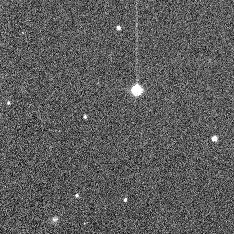Image: DART-impact-SAAO-Lesedi-Mookodi
Description: Although not as finely detailed, a similar view from the South African Astronomical Observatory’s Lesedi telescope provides long parallax and thus an opportunity for astronomers to study the evolution of the plume in stereo. NASA’s DART spacecraft sped toward its inevitable demise against the blocky surface of Dimorphos, most space fans’ eyes were on the NASA Television feed of DART spacecraft photos, streamed to Earth at a rate of one per second. Dimorphos and its larger companion Didymos resolved into worlds with fascinating surfaces covered with gullies and angular blocks. Then, this morning, the Italian Space Agency shared the first photos from DART’s companion LICIAcube minisatellite: before-and-after images of the impact crash.
But DART and LICIAcube weren’t the only cameras watching the impact. Around the world, astronomers pointed telescopes at the pinpoint of light from the Didymos system, hoping to catch an impact flash. “What we should see with telescopes on the ground is a dot in the sky that should, suddenly, increase in brightness,” the European Space Agency (ESA) predicted in a pre-impact press release about the ground-based observing campaign. Their hopes were rewarded — and then some.
Author: Dr Nicolas Erasmus (SAAO) and Amanda Sickafoose (Planetary Science Institute) using the Mookodi instrument on the (South African Astronomical Observatory) SAAO's 1-m Lesedi telescope.
Usage Terms: Creative Commons Attribution-Share Alike 3.0
License: CC-BY-SA-3.0
License Link: http://creativecommons.org/licenses/by-sa/3.0/
Attribution Required?: Yes
Image usage
The following 2 pages link to this image:


